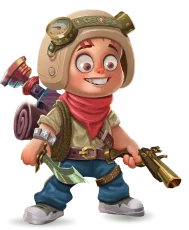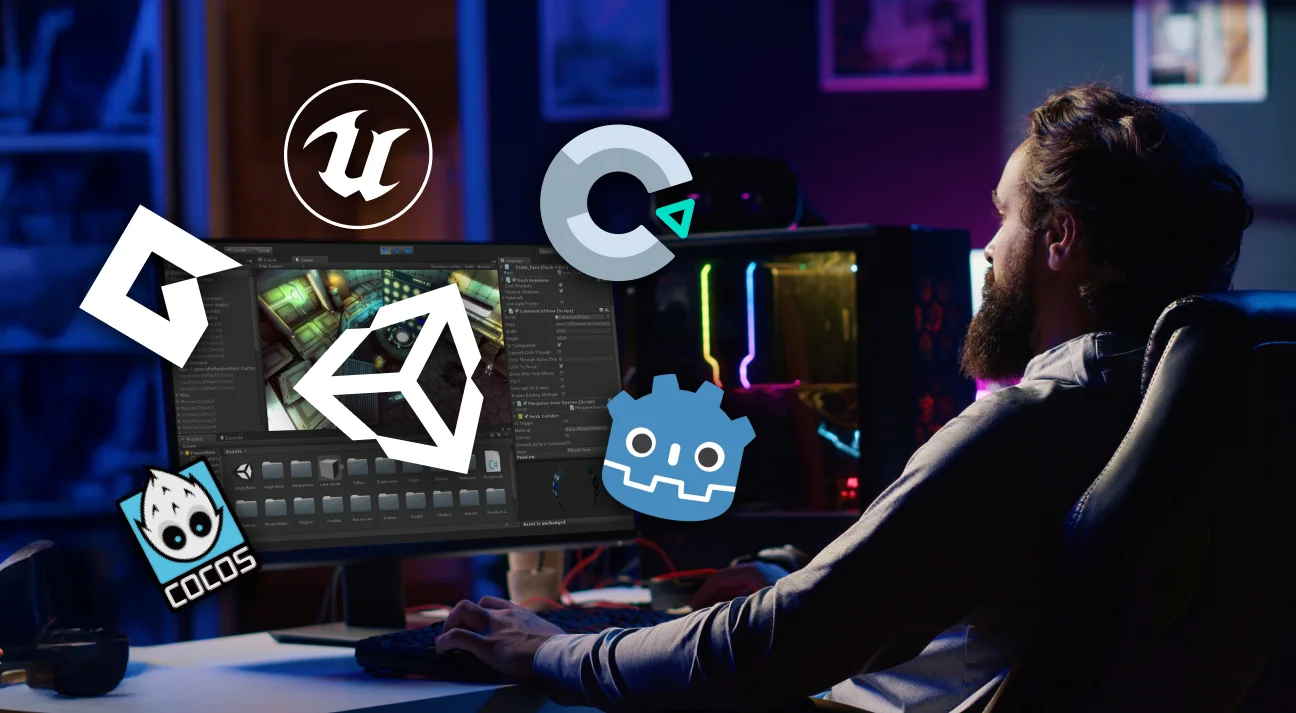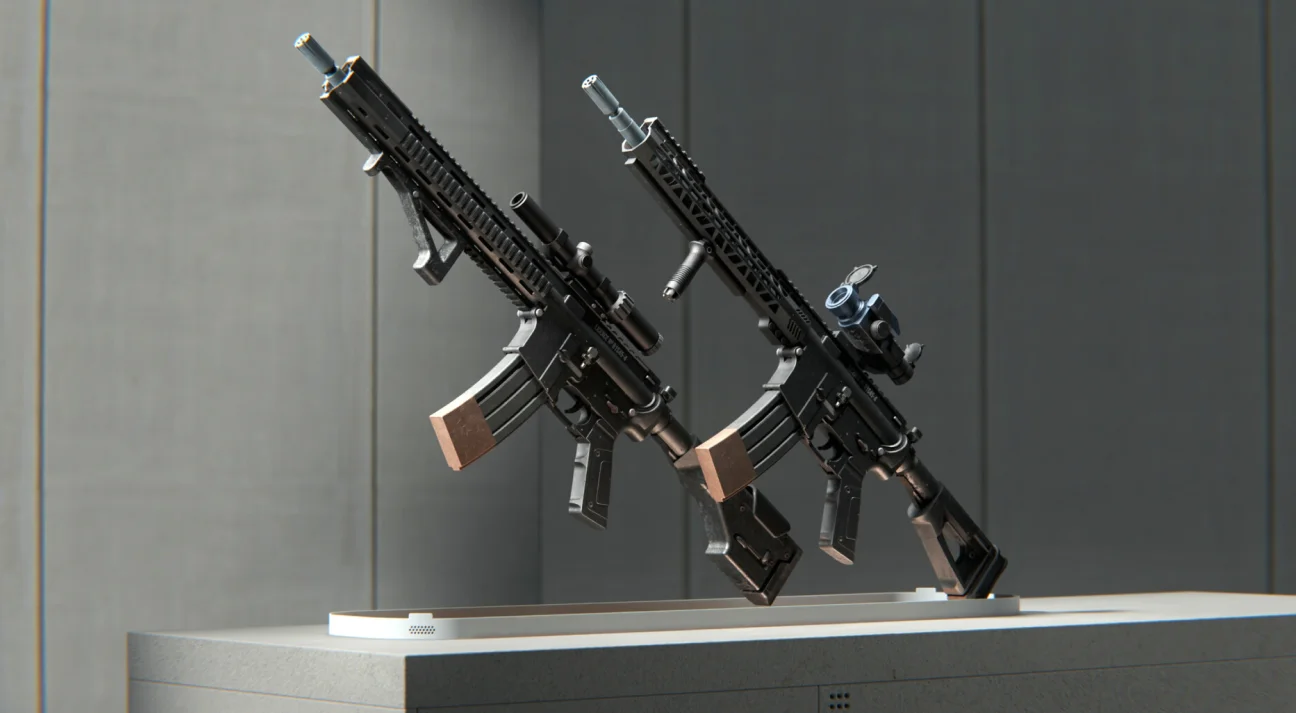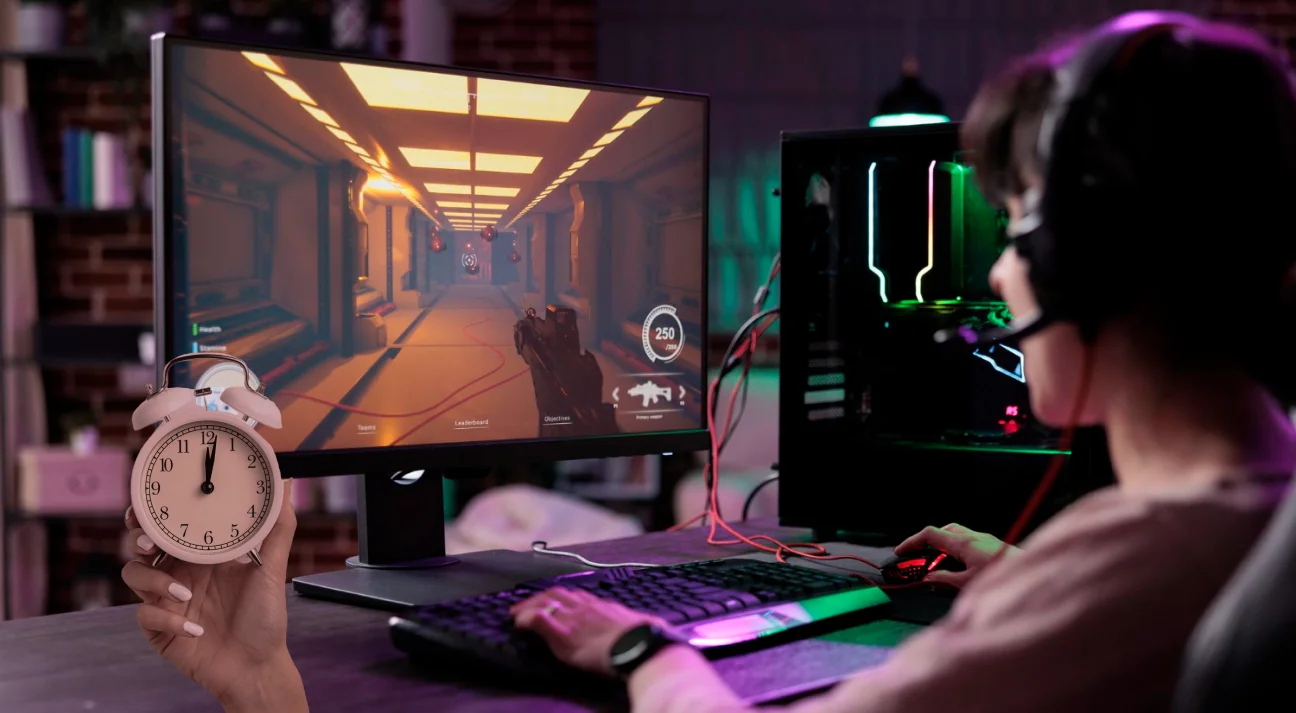
How Long Does It Take to Make a Game?
Willing to determine how long it takes to make a game?” If yes, you should know that building a game in a medium-complexity genre like action, sports, and adventure may take anywhere between 6 and 18 months, while developing a complex game like RPGs and MMORPGs is more likely to take between 2 and 7 years. Read through this blog and know how long it exactly takes to develop a game!
The one-line answer to this question, “How long does it take to make a video game?” is that there’s no one-line answer. Many aspects of game development alter the development timeline, and to determine the same, you need to gauge every single one of them.
Games such as Pong, No Time to Explain, and Garry’s Mod took just a matter of a few weeks and months to be built, whereas others like Duke Nukem Forever, The Last Guardian, and Final Fantasy XV took several years to come to life.
Wondering about variety in game development time? That much difference is just because of the variety in the requirements. Right from game type, game size, and game genre to its complexity, required features and functionality, and many others play a considerable role, differing the time to make a game.
Let’s skip to the exploration of those factors to know how long it exactly takes to make a game! It’ll help you get a good grasp on the key differentiators and come to a conclusion about the time to build a game before you hire game developers for your project development.
- 8 Key Factors Affecting the Game Development Time
- How Long Does It Take To Create A Game Design Document?
- How Long Does It Take to Develop a Video Game?
- How Long Does It Take to Create Sound & Music for a Video Game?
- How Long Does It Take To Develop Indie Games?
- How Long Does It Take to Develop a Mobile Game?
- How Long Does It Take To Make a AAA Game?
- What’s Development Hell?
- What’s Game Jam?
- How Long Does It Take to Make a Game In Different Genres?
- How To Lessen The Game Development Time?
- Experience Streamlined Game Development with 300Mind
- FAQs About Game Development Time
8 Key Factors Affecting the Game Development Time
Project scope, funding, game art, game length, and many other aspects can differ in how long it takes to make a mobile game. The following are some of them you should know!
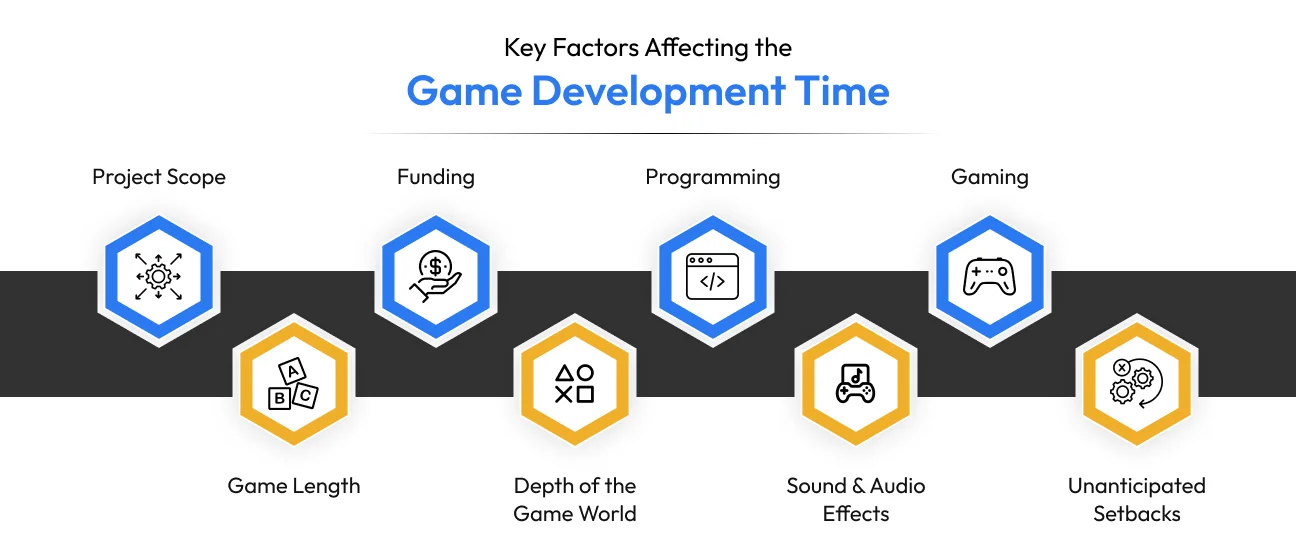
1. Project Scope
The project scope is more likely to differentiate the time of game development. The larger your project’s scope, the higher the development time will be. The game development scope involves the size of the game world, the number of levels, the complexity of the game mechanics, along with the number of items and characters in the game.
For streamlined game development, you need to balance the resources available and the project scope. Developing a game with a large scope needs more resources, leading to an increase in the development time. On the contrary, if you limit it, you are more likely to accelerate the time of project accomplishment.
However, limiting the scope speeds up the development time, which may lead to limiting the game’s potential. Therefore, it’s essential to consider keeping your ambition from the game aligned with the resources available. Following are the steps through which you can manage your project scope efficiently and reduce development time!
- Set Crystal-Clear Objectives: Define your game’s core features and mechanics clearly.
- Stay Agile: Employ an Agile development approach to adapt to constantly changing priorities and player feedback.
- Set Milestones: Consider breaking the project into manageable milestones so that you can keep track of progress and make adjustments as needed.
2. Funding
Keeping adequate funding aside beforehand is indispensable to ensuring streamlined game development and deployment. Limited funding is more likely to lead to delays in game development by causing a lack of timely access to the required resources. The availability of sufficient funding allows you to dedicate appropriate resources to the project, speeding up the project’s development.
When you have arranged the required funding, you can freely hire more staff, gather efficient equipment, and access time-tested game development tools. More resources means more people with multiple tools working on different aspects of a project, resulting in speeding up the game development time.
Consider the following funding alternatives to circumvent financial roadblocks and hassles:
- Crowdfunding: Consider engaging with platforms like Indiegogo or Kickstarter based in the USA to accumulate financial assistance from gaming enthusiasts.
- Bootstrapping: You can consider self-funding your project if possible, but don’t forget to be mindful of limitations.
- Investors and Publishers: Try to seek partnerships with game publishers or investors capable of providing expertise and capital.
3. Programming
Programming is one of the most crucial aspects of game development. The more complex the game, the longer the code will be. For instance, the Elder Scrolls V: Skyrim and Grand Theft Auto V are claimed to contain around 100 million lines of code.
On the other hand, games like Flappy Bird and Tetris have relatively simple mechanics and a straightforward design that enable them to be implemented with minimal codebase. Consider the following for efficient coding and mitigated game development time.
- Employ Proper Tools: Opt for excellent programming languages for game development and tools that are in alignment with your project requirements and the skillsets of your team.
- Modular Coding: Consider breaking down complex systems into modular components for convenient testing, debugging, and maintenance.
- Frequent Testing: Implement continuous testing to ensure the bugs in the product get identified and debugged early.
4. Game Art
Games that require extensive artwork are more likely to feature intricate design, rich visuals, and vast environments. If you’re to create art for an open-world MMORPG game, be ready for more artwork compared to other projects.
Games like Final Fantasy XV are known for their expansive landscapes, detailed character models, and elaborate cutscenes. This kind of game requires extensive artwork in its various aspects.
- Establish Art Style Early: Define a clear art style and guidelines, intending to circumvent unnecessary revisions later.
- Create Concept Art: Make use of concept art to ensure intensive visualization of ideas before final development for streamlined iterations.
- Prioritize Tasks: Keep your high-impact task as the first priority, and make sure the essential elements get accomplished on time.
5. Game Length
Measured in gameplay hours and levels, the game length significantly differentiates the development time. The more content you wish to add or deliver, the longer the game development time will be. Consider the following strategies to optimize the game length without sacrificing the quality. It’ll help you minimize game development time.
- Be Focused on Core Gameplay: Keep the core gameplay and mechanics as a priority to ensure delivering a satisfying experience to gamers, even in shorter games.
- Expand via Updates: Release additional content and updates post-deployment to extend gameplay while avoiding delays in the initial release.
6. Depth of the Game World
The depth of the game world is another factor that hugely differentiates the game development time. Although they need an increased amount of resources to develop, we all adore AAA games because of their immersive and exciting game world.
Developing a feature-rich and detailed game world takes time and effort, as it involves many aspects, including creating an environment, characters, and lore to make up the game world. You can follow the steps below to streamline game development speed:
- Use World-Building Frameworks: Employ a world-building framework that allows expansion through future updates.
- Player Exploration: Consider player exploration within the game world to elevate engagement without creating excessive content.
7. Sound & Audio Effects
Creating sound and audio effects in a game takes a considerable amount of time that may go between a few days to several weeks and even months depending on your requirements. Sound artists need to record an unmatched soundtrack for a game. They tend to record realistic sounds, for example, character sounds, environment sounds, vehicle sounds, weapon sounds, and so on.
The process of sound and audio effect creation is time-consuming and may cause a significant delay in game development. Considering the following, you can mitigate the time it takes to create sound and audio effects, thereby cutting down the overall game development time!
- Outlining Sound Design Goals: Clearly define the audio needs early on in the game development, as it assists you in circumventing scope changes later.
- Create Sound Style Guides: Create guidelines for sound style, effects, and music to ensure consistency and reduced revision down the line.
- Prioritize Sounds: Determine the most crucial audio elements for gameplay and focus more on those primarily to resist spending more time on less impactful sound creations.
- Iterate and Refine: Create initial sounds hastily and consider refining them later depending on the testing and feedback rather than venturing for perfection on the very first attempt.
8. Unanticipated Setbacks
No matter how well-prepared you and your game development team are, there are always possibilities for unforeseen setbacks. These setbacks may involve technical issues like bugs and glitches, delayed equipment delivery, team member’s illness, burnout, or sometimes unexpected design challenges. They can cause a delay in game development and deployment. You may employ the following steps to reduce the time for game development and delivery:
- Buffer In Your Schedule: Consider allocating extra time in the game development timeline so that you can accommodate unexpected delays.
- Consistent Communication: Maintain uninterrupted communication in your team to address issues timelessly.
How Long Does It Take To Create A Game Design Document?
It takes anywhere between 2 weeks to 3 months to create a game design document. The time required to create the game design document varies depending on a variety of facets, including the game’s complexity, the level of detail in the design, and the experience and expertise of the game development team working on the project.
A kind of blueprint, the game design document guides the entire game development team throughout development. This document encompasses level layouts, game mechanics, character and enemy descriptions, storylines, and many more.
How Long Does It Take to Develop a Video Game?
While a small indie game with simple game mechanics may take 2-4 months to develop, and a game in a medium-complexity genre like action and adventure takes between 6-18 months, if you have a large-scale AAA game development requirement, it might take many years (between 2-7 years) to be developed.
The time it takes to develop a video game depends on a number of factors. These include the game’s scope, complexity, the size of the development team, their experience and expertise, and the list goes on and on.
The game development involves many stages, including coding gameplay mechanics, implementing graphics and audio, and intensive QA testing. A seamless collaboration among designers, programmers, and game artists is a must-have to streamline game development.
How Long Does It Take to Create Sound & Music for a Video Game?
If you have a mobile game, or a game in the genre like a platformer, casual, or hyper-casual, it takes between 10 days to a month to create sound and music. In case it’s a PC, console game, or a huge game, the time to create sound and music for the video game may go anywhere between 1-3 months.
In general, creating sound effects is likely to take a few months, while composing a game’s soundtrack requires several months or even more. Being an integral part, the sound effects and music play a vital role when it comes to delivering an immersive gaming experience. The time to develop game sound and music varies depending on the game’s complexity and the needed audio quality.
How Long Does It Take To Develop Indie Games?
Similar to others, the time to develop an indie game may vary depending on a variety of factors that may go anywhere between 6 months to 3 years. In general, indie games are built by small teams or solo developers. These games are mostly self-funded or maybe built through crowdfunding. Although simple in design and scope, indie games tend to be highly engaging and enjoyable.
The simple design and scope of indie games make a significant difference in shortening the development time. For instance, it took two years for Among Us and four years for Stardew Valley to develop as an indie game. Simple graphics and mechanics contributed to the streamlined development lifespan of these games.
How Long Does It Take to Develop a Mobile Game?
Simple 2D platformers and match-3 games have a short development time that’s more likely to be anywhere between 2 to 4 months. A game in medium complexity genres, for example, sports, action, and adventure needs more time, which may fall anywhere between 6 to 18 months and even more.
When it comes to complex mobile games such as GRPs and MMORPGs, they undergo a long development procedure which may be between 1 to 7 years.
The time to build a mobile game tends to differ immensely depending on their categories. While some get developed in just a matter of a few months, others may take even a few years to be developed and deployed. The development time mostly depends on the specific requirements of your project.
How Long Does It Take To Make a AAA Game?
It takes between 1 to 7 years for a AAA game to come to life. That’s because of their expansive, intricate, and highly detail-oriented features. The time can be even more depending on the requirements and complexities of the game. The Duke Nukem Forever has a record for the longest development time for a video game, which is 14 years and 43 days. The long development time of AAA games is because of their next-level complexities.
AAA games with open-world environments, advanced graphics, and complex mechanics require longer development time in comparison to simple games. Grand Theft Auto V, for example, took five years to develop, and the above-mentioned factors contributed to the increased development time for this game.
What’s Development Hell?
Development hell is a circumstance wherein the game development gets stuck during the pre-production or production phase for a long period of time with no progression toward game deployment. There comes a time when games fall under development hell and take forever to be built. There may be various reasons for development hell, and the following are a few of them:
- Unanticipated technical obstacles
- Improper project planning
- Budget constraints
- Technical challenges
- Challenges relating to finance
- Changes in vision
- Scope creep
- Regulatory issues
- Change in management
- Prototyping failures
- Overly ambitious project
- Unrealistic deadlines
- Internal conflicts
Example of Development Hell?
From stunning visuals and evocative musical scores to unforgettable stories and gripping gameplay, games are the most immersive form of modern media. But developing games isn’t that easy. Many times, the process of game development goes off the rails, leading to a period of slow progress or even inactivity known as development hell. Following are a few examples of games that encountered development hell:
- Body Harvest
- Metroid Dread
- Oddworld: Abe’s Exoddus
- Star Citizen
- Mother 3
What’s Game Jam?
A game jam is an event wherein game developers team up together intending to develop games from scratch. In this event, developers build games in just a matter of a single day or within a few days. Ludum Dare, Global Game Jam, Extra Life Game Day, GMTK Game Jam, and Mini Jam are some of the world’s famous game jam events conducted across the world.
Towerfall, Inscription, and Starve are some of the games developed by the Game Jam events. This event has a predefined and set time limit; hence, game developers push their boundaries to develop games in a short span of time.
How Long Does It Take to Make a Game In Different Genres?
As we’ve already had a detailed overview of the time it takes to develop games on different parameters, now glance at the table below to understand how long it takes to develop games in different genres!
| Sr. No. | Game Genre | Development Time | Description |
| 1 | Casual or Mobile Games | A few months to 1-2 years | Development time differs depending on the complexity of the casual game. |
| 2 | Role-playing Games (RPGs) | 2-7 years | Because of complex gameplay systems, extensive content, and narrative depth, RPGs are considered to be the most time-consuming games to develop. |
| 3 | 2D Performer, or Puzzle Games | 6 months- 2 years | The required development time for these games equals the casual game development time. |
| 4 | 3D Action/Adventure Games | 1-3 years, or more | The more complex design and gameplay you have, the more time it’ll take to build the game. |
| 5 | First-Person-Shooter (PFS) Games | 1-3 years | A smaller-scale FPS may take 1-2 years, while a larger or more ambitious one is likely to develop in 3 years or more, depending on the complexity. |
| 6 | Simulation Games | 1-3 years | Simulation games need detailed mechanics and systems to simulate real-world phenomena, resulting in extended game development time. |
| 7 | Real-Time Strategy (RTS), or Turn-Based Strategy Games | 1-3 years | Because of complex AI systems, intricate game mechanics, and balance considerations, developing strategy games is time-consuming. |
| 8 | Massively Multiplayer Online (MMO) Games | 3-5 years | Because of their persistent worlds, massive scale, and complex networking needs, MMOs are some of the most ambitious and time-consuming games. |
How To Lessen The Game Development Time?
Minimizing game development time can add specific potentials to your game development project, like faster time-to-market and rapid ROI. Employ the factors mentioned in the pointers below to help you cut down the game development time!
- Clearly plan the process of game development.
- Consider efficient project management.
- Reuse existing tools and assets to cut down on development time.
- Conduct proper quality assurance testing uninterruptedly to detect and fix bugs.
- Opt for offshore outsourcing if needed to enlarge your existing team.
- Ensure effective communication and collaboration among team members.
Many aspects like game scope, game art, tech stack, features, and functionalities, along with the complexity of the project, differentiate the game development time massively. Hence, you should choose the right game development company that plans game development strategically and provides the expected results.

Experience Streamlined Game Development with 300Mind
At 300Mind, we’re a team of sharp-witted game developers, project managers, and QA testers helping businesses with robust and high-performance game development services timelessly. Employing our years of experience, we’ve built various games, including Dots and Boxes, Bal Hanuman, and many others, delineating our expertise and excellence in yielding high-end games.
If you’re someone trying to turn your game idea into reality within a set timeframe, getting stopped by us is the way to go! We help you align our expertise, experience, and tech competencies with your project idea, thereby, providing streamlined game development. It’ll not only enable you to leverage faster time to market your game but also decrease the game development cost with increased ROI.
FAQs About Game Development Time
While simple 2D platformers and match-3 games take around 2-4 months to develop, a game in a medium-complexity genre like action and adventure may take more time, anywhere between 6-18 months, and even more, depending on game requirements. If you have a complex game like RPGs and MMORPGs, the development time may go anywhere between 3-10 or even more years.
The term “AAA Games” tends to be a classification in the game development industry that signifies high-budget and high-profile games. These games are typically developed and distributed by large and renowned publishers. Because of their extreme popularity, AAA games rank as “blockbusters.”.
Indie games, or independent video games, are created by a small team or an individual game developer without any assistance from a large game publisher. Indie games tend to be known for their unmatched concepts, artistic expressions, and experimental gameplay mechanics.
Several programming languages are there to develop video games, including Java, JavaScript, C++, C#, Python, Swift, Lua, Python, Swift, and many more. However, these are excellent languages; for a better understanding, you should contact a game development company to know which one of these programming languages will suit your needs the most.
